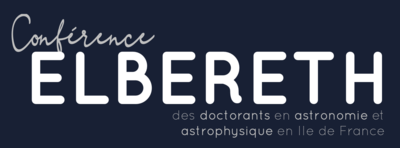Orateur
Description
The characterisation of cosmic dust properties is key for understanding, among other things, planet formation processes. Astronomical observations provide us information from which it is possible, but not trivial, to deduce physical properties of cosmic dust. For instance, recent observations of 12 young protostars found dust emissivity indices with values β < 1 [Maury et al. 2019, Galametz et al. 2019], which would imply that dust coagulated into grains over 100µm in size [Ysard et al. 2019], much larger than what predicts actual paradigms of planet formation at this stage of stellar evolution. However, relating the grain sizes to their opacity measured in the millimetre bands is not straightforward and rely heavily on the validity of current dust models used as astrophysical analogues in the community. For example, the optical properties of large dust aggregates in cold environments, as observed in millimetre wavelengths were not explored in a systematic way, limiting the astrophysical interpretation that can be done from the measurements, especially for the dense ISM. Our work addresses this blind spot, building new physically-motivated dust models to interpret the dust signatures in protostellar environments.
Our study concentrates on the optical properties of a few examples of dust grains. Using laboratory-measured material properties from the THEMIS 2 dust model [Ysard et al. 2024], we derive various grain shapes in the scope of picturing the evolution from small compact grains to potentially large fluffy aggregates. We used the Discrete Dipole approximation (DDA) code ADDA [Yurkin et al. 2011] to compute our grains’ optical properties. First results show a heavy dependence of these optical properties on the shape, but also on the composition of dust grains.
Building reliable dust models is decisive in the interpretation of observations of the dense ISM, in our understanding of dust evolution towards planet formation. We hope to build a robust model of dust grains population, challenge fiducial dust models, and permit to make progress in these fields.
| Astrophysics Field | Interstellar medium, Star formation |
|---|

